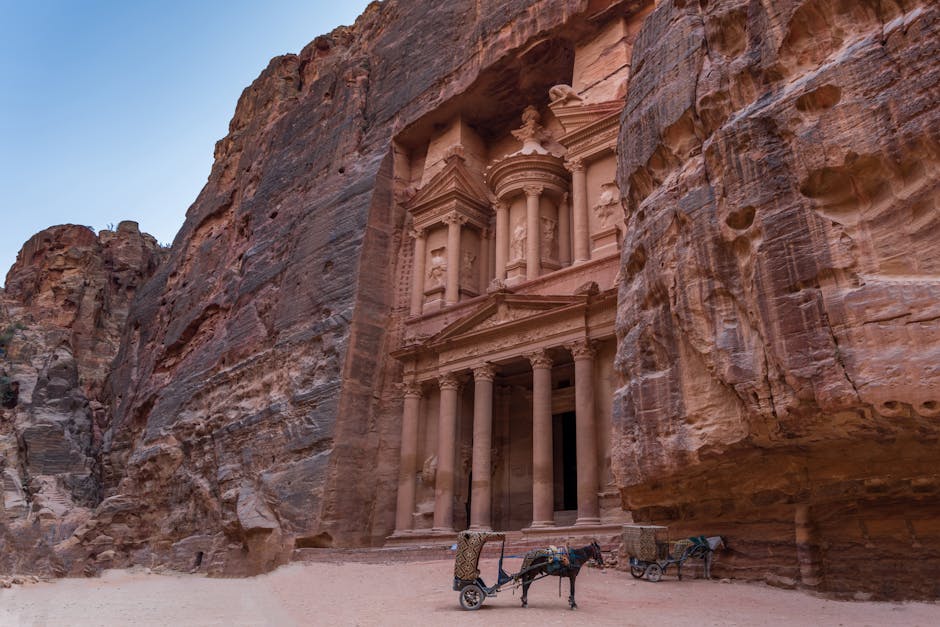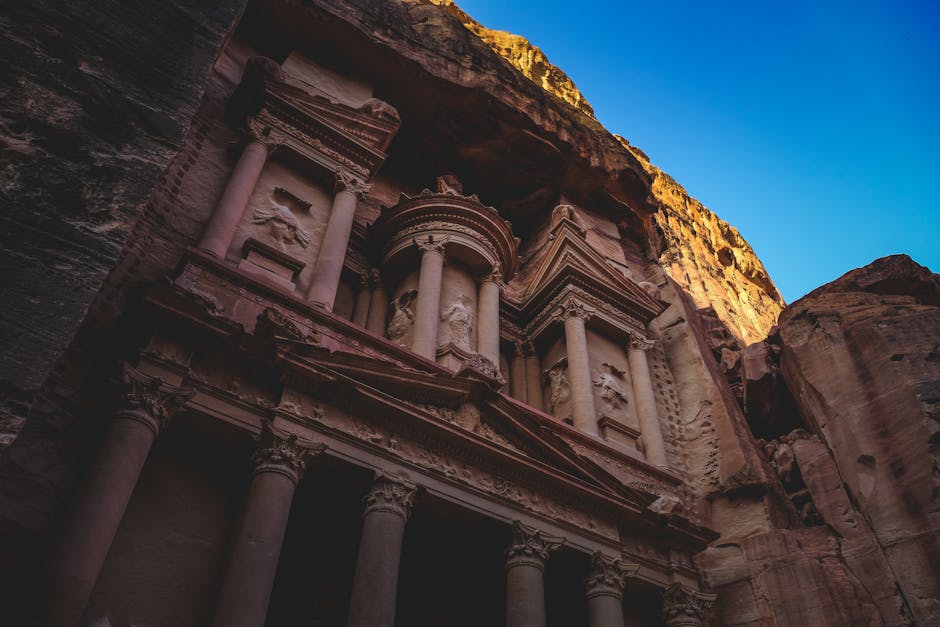Discovering the Ancient Ruins of Petra, Jordan

Petra, Jordan, is one of the most iconic archaeological sites in the world. This ancient city, carved into rose-red cliffs, has captivated historians, archaeologists, and tourists alike for centuries. Once a bustling hub of trade and culture, Petra's impressive ruins offer a glimpse into the rich history of the Nabataean civilization. Nestled within the rugged landscapes of southwestern Jordan, Petra continues to reveal its secrets to those who venture into its hidden corners.
Historical Significance
The origins of Petra date back to around 312 BC when it was established as the capital of the Nabataean Kingdom. The Nabataeans were a nomadic tribe known for their architectural prowess and sophisticated water management systems. Petra flourished as a major trading center, connecting routes between Arabia, Egypt, and the Mediterranean.
One of the most striking features of Petra is its rock-cut architecture. Structures such as the Treasury (Al-Khazneh) and the Monastery (Ad-Deir) showcase the Nabataeans' skill in carving monumental buildings directly into the sandstone cliffs. These structures are not only impressive for their size but also for their intricate details and artistry.
Petra's decline began in the 4th century AD due to changing trade routes and natural disasters. By the 7th century, it was largely abandoned. Rediscovered in 1812 by Swiss explorer Johann Ludwig Burckhardt, Petra has since been a focal point for archaeological study and tourism.
Main Attractions
Visitors to Petra can explore a wide array of ancient structures and monuments. The Siq, a narrow gorge that serves as the main entrance to Petra, sets the stage for an unforgettable journey. Walking through the Siq, visitors are greeted with glimpses of carvings and niches that hint at what lies ahead.
The Treasury is arguably Petra's most famous landmark. Believed to have been built in the 1st century AD as a mausoleum for Nabataean king Aretas IV, its grand façade is adorned with intricate carvings and Corinthian columns. Despite its name, there is no evidence that it ever served as a treasury.
Other notable sites include the Street of Facades, lined with tombs and houses; the Theatre, which could seat up to 8,500 people; and the Royal Tombs, a series of large mausoleums with elaborate facades.
Cultural Insights
Petra's significance extends beyond its architectural marvels. The city reflects a blend of cultural influences from neighboring civilizations such as the Greeks, Romans, and Egyptians. This cultural melting pot is evident in Petra's art, religion, and daily life practices.
Archaeological findings have revealed various aspects of Nabataean life. For instance, pottery fragments and inscriptions provide insights into their language and writing system. Additionally, remnants of religious structures indicate that the Nabataeans worshipped a pantheon of gods influenced by various cultures they interacted with.
The Nabataeans were also known for their advanced engineering skills. They developed an extensive water management system that included dams, cisterns, and aqueducts to collect and store water in this arid region. This ingenuity allowed them to thrive in an otherwise inhospitable environment.
Visiting Petra Today
Today, Petra is a UNESCO World Heritage site and one of the New Seven Wonders of the World. Visitors from around the globe come to marvel at its ancient ruins and experience its unique atmosphere. Exploring Petra can be both physically demanding and immensely rewarding.
It's advisable to start early in the morning to avoid the heat and crowds. Hiring a local guide can enhance your visit by providing historical context and sharing lesser-known stories about Petra's past.
- Wear comfortable walking shoes
- Bring plenty of water
- Use sun protection
- Respect local customs and regulations
| Time Period | Key Events |
|---|---|
| 312 BC | Establishment of Petra as Nabataean capital |
| 1st Century AD | Construction of major structures like the Treasury |
| 4th Century AD | Beginning of Petra's decline |
| 1812 AD | Rediscovery by Johann Ludwig Burckhardt |
| 1985 AD | Designation as a UNESCO World Heritage site |
The Bedouin community plays an integral role in preserving Petra’s heritage today. Many Bedouins work as guides or sell handmade crafts to visitors. Engaging with them offers an opportunity to learn about their traditions and connection to this historic site.
The significance of Petra lies not only in its breathtaking architecture but also in its testament to human ingenuity and cultural exchange. From its origins as a vibrant trade center to its rediscovery in modern times, Petra continues to inspire awe and admiration. Its preservation allows future generations to appreciate this remarkable window into our shared history.
A visit to Petra is more than just a journey through ancient ruins; it's an exploration of human achievement against all odds. As you walk through this majestic city carved out of stone, you're reminded of our enduring quest for knowledge, beauty, and connection across time.
References
UNESCO World Heritage Centre: Petra Encyclopaedia Britannica: Petra History.com: Petra - HISTORY JSTOR: The Archaeology of Jordan by Burton MacDonald (Academic Paper) Lonely Planet: Guide to Petra
